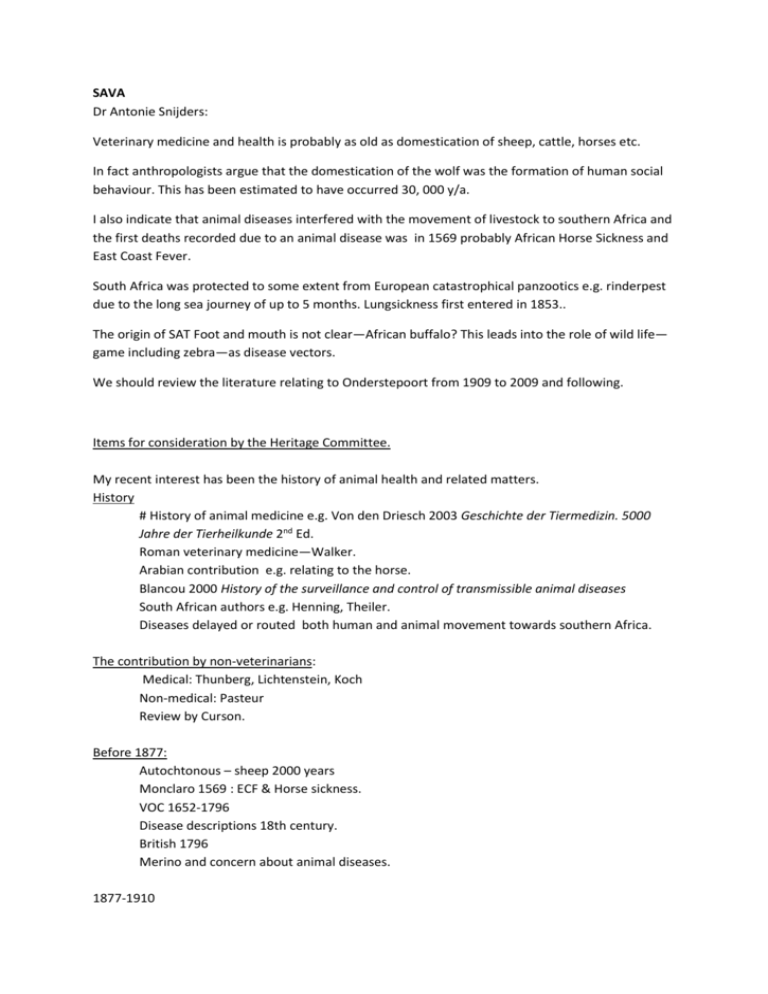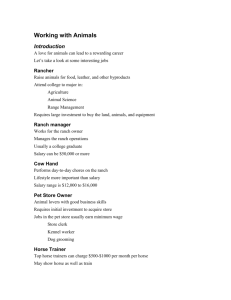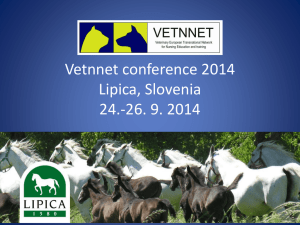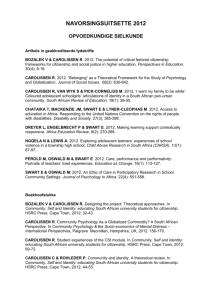Dr Snijders Items for consideration
advertisement

SAVA Dr Antonie Snijders: Veterinary medicine and health is probably as old as domestication of sheep, cattle, horses etc. In fact anthropologists argue that the domestication of the wolf was the formation of human social behaviour. This has been estimated to have occurred 30, 000 y/a. I also indicate that animal diseases interfered with the movement of livestock to southern Africa and the first deaths recorded due to an animal disease was in 1569 probably African Horse Sickness and East Coast Fever. South Africa was protected to some extent from European catastrophical panzootics e.g. rinderpest due to the long sea journey of up to 5 months. Lungsickness first entered in 1853.. The origin of SAT Foot and mouth is not clear—African buffalo? This leads into the role of wild life— game including zebra—as disease vectors. We should review the literature relating to Onderstepoort from 1909 to 2009 and following. Items for consideration by the Heritage Committee. My recent interest has been the history of animal health and related matters. History # History of animal medicine e.g. Von den Driesch 2003 Geschichte der Tiermedizin. 5000 Jahre der Tierheilkunde 2nd Ed. Roman veterinary medicine—Walker. Arabian contribution e.g. relating to the horse. Blancou 2000 History of the surveillance and control of transmissible animal diseases South African authors e.g. Henning, Theiler. Diseases delayed or routed both human and animal movement towards southern Africa. The contribution by non-veterinarians: Medical: Thunberg, Lichtenstein, Koch Non-medical: Pasteur Review by Curson. Before 1877: Autochtonous – sheep 2000 years Monclaro 1569 : ECF & Horse sickness. VOC 1652-1796 Disease descriptions 18th century. British 1796 Merino and concern about animal diseases. 1877-1910 1877 Commission Animal diseases and first non-military veterinarian. Review knowledge of nonveterinarians. Diseases: Scab Bluetongue* Horse sickness* Redwater Rinderpest—consider the socio-economic impact; importation zebu cattle East Coast Fever Diseases, plant-poisoning etc recognized 19th century identified early 20th century. Parasites: Ticks Helminths Blowfly. Research: 19th century Cape Late 19th , 20th and 21st : Cape, Transvaal Veterinary education: Before 1920’s :London , Edinburgh, Switzerland etc Before 1920’s—Soga, Curson etc Veterinary science: Theses, Articles, Conferences. AJ Snijders. June 4, 2015. *Peculiarly African I must assume that some of the other Committees will also address the history. An appropriate title would be the Danish collection of “They went before us”. This will include a multitude of writers, medical and other professions. Legislation and effects. Lise Wilkinson (1992) reviewed the history of comparative medicine. The Church forbade human post mortems for anatomical purposes and animals had to be used. South Africa was the first of the modern colonies to have livestock and dogs on the arrival of the Portuguese and thereafter. The availability cattle and sheep was a major consideration for the establishment of a Refreshment Station in Table Bay. Anne, the following is not for general circulation unless you consider it of interest: I have a published articles on Van Riebeeck and the Cape and Robben Island as a sheep breeding station to avoid the diseases and high mortalities of the Peninsula. Name Paarden Island in old Cape Town because very rarely did Horse-sickness occur there. The African continent is unique in terms of the diversity of game, game as hosts of livestock diseases, disease vectors and strains of e.g. rabies, foot-and-mouth and African Horsesickness. Our variety of ticks and tick-borne diseases hence workers like Gertrud Theiler, Jane Walker, Ivan Horak etc. We have to review the development of the concept of disease, infectivity and contagion. Consider the progress from e.g. scabies(mite), anthrax# (bacterial), protozoal (Babesiosis) to Footand-mouth (Viral). # I think that the anthrax vaccine of Max Sterne saved more animal lifes worldwide than any other animal vaccine (? Human vaccines?). Anthonie Snijders.











